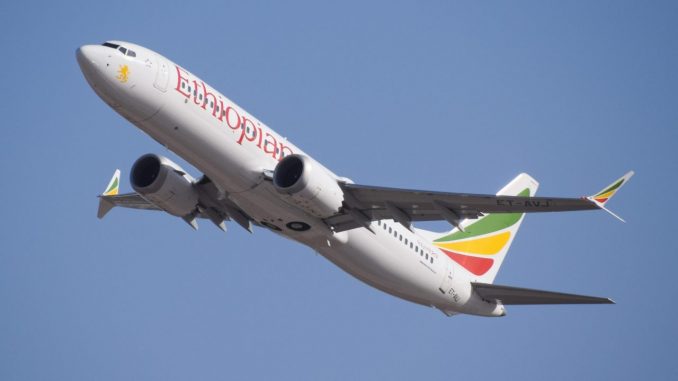
The Ethiopian Accident Investigation Bureau (AIB) has released its first preliminary report into the accident of Ethiopian Airlines flight ET302, which crashed shortly after take off from Addis Ababa on March 10th. The four-month-old Boeing 737 MAX 8 was the second fatal crash of the 737 MAX in five months, with the first one being Lion Air flight JT610 in October 2018. This led to an international grounding of the type, as the two accidents showed big similarities, even with in-depth investigations still going on.
Control problems
The report cites one of the main causes of the accident as the so called Manoeuvring Characteristics Augmentation System (MCAS), which activated multiple times during the flight’s short duration, before it crashed killing all 157 passengers and crew on board. According to the report, which is based on data from the aircraft’s data recorders, the Angle of Attack (AoA) vanes started to ‘disagree’ moments after lift-off and the stick shaker activated (which physically vibrates the control column to alert the pilots that the aircraft is approaching a stall), remaining active until the aircraft hit the ground. Airspeed and altitude indications also disagreed from the left and right-hand-side instruments.
At the same time, the autopilot disconnected as it couldn’t handle the mismatch in information it was receiving, and the crew reported to Air Traffic Control that they were experiencing flight control problems. It is clear that the crew were aware that the aircraft was automatically trimming the pitch of the nose down, and attempted to manually control the trim several times. They also disconnected the automatic trim system by flipping the ‘stab trim cut-out’ switches – a memory checklist item which is correct procedure in the circumstance.
MCAS ultimately continued to trim the aircraft nose in a downward motion, beyond the pilot’s control, ending in a 40 degree nose down angle and the aircraft impacted the ground at an indicated 458 knots/500 knots depending which airspeed indicator information is used.
Ethiopian Airlines has released a statement alongside the report which confirms that the crew complied fully with the correct operating procedures set for regaining control of the aircraft.
Software update for 737 MAX
Boeing has quickly responded to the AIB’s statement:
The American aircraft manufacturer later mentions the MCAS:
To ensure unintended MCAS activation will not occur again, Boeing has developed and is planning to release a software update to MCAS and an associated comprehensive pilot training and supplementary education program for the 737 MAX.Boeing
The report comes one day after Boeing CEO, Dennis Muilenburg, flew on a test flight of the new software on a Boeing 737 MAX 7 test aircraft.
Experienced the MCAS software update performing safely in action during a 737 MAX 7 demo flight. Thanks to our great pilots for taking me up and for the focus on safety. Learn more: https://t.co/w2XaPA1jyS pic.twitter.com/Fe6D7Guolf
— Dennis A. Muilenburg (@BoeingCEO) April 3, 2019
According to the U.S. Federal Aviation Administration (FAA), Boeing’s schedule for the MCAS update release was delayed, as the manufacturer needs more time to carry out additional works “as the result of an ongoing review of the 737 MAX Flight Control System […].” The FAA says it will not approve an installation of the software update until it is fully satisfied with the submission.
The preliminary AIB report is available in full here.
Matt is a Berlin-based writer and reporter for International Flight Network. Originally from London, he has been involved in aviation from a very young age and has a particular focus on aircraft safety, accidents and technical details.



